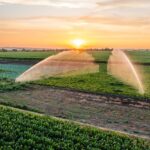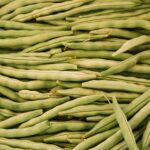Maize, also known as corn, is one of the most important staple crops in South Africa. If you are considering growing maize, whether for personal consumption or commercial purposes, it is essential to have a good understanding of the key aspects involved in successful maize cultivation. In this article, we will discuss ten important things you should know before embarking on maize farming in South Africa.
- Climate and Growing Conditions: Maize is a warm-season crop that requires specific climatic conditions for optimal growth. Familiarize yourself with the climate in your region, including temperature, rainfall patterns, and frost occurrences. Select maize varieties that are suitable for your specific climatic conditions to ensure successful growth.
- Soil Requirements: Maize prefers well-drained, fertile soils with a pH level between 5.8 and 7.5. Conduct a soil test to assess its nutrient content and pH level. Based on the results, amend the soil with organic matter or fertilizers to optimize soil fertility and ensure proper nutrient availability for maize plants.
- Seed Selection: Choose high-quality maize seeds from reputable suppliers. Consider factors such as yield potential, disease resistance, and adaptability to your specific region. Different maize varieties are available, each with its own characteristics and maturity periods. Select varieties that align with your farming goals and market demand.
- Planting Season and Spacing: Determine the appropriate planting season for maize in your region, considering the onset of the rainy season and frost risks. Proper spacing between plants is crucial for optimal growth and yield. Follow recommended spacing guidelines based on the maize variety and ensure adequate row spacing for efficient cultivation practices.
- Fertilization and Nutrient Management: Maize has specific nutrient requirements at different growth stages. Develop a fertilization plan based on soil test results and recommended guidelines. Provide appropriate amounts of nitrogen, phosphorus, and potassium, as well as micronutrients, to ensure healthy plant growth and maximize yield potential.
- Weed Control: Weeds compete with maize for nutrients, water, and sunlight. Implement effective weed control measures, such as pre-planting weed management and post-emergence herbicide application. Timely and proper weed control is crucial to prevent yield losses and ensure the successful growth of maize plants.
- Irrigation: Depending on your region’s rainfall patterns and soil moisture holding capacity, you may need to provide supplemental irrigation to ensure adequate moisture levels for maize plants. Familiarize yourself with efficient irrigation techniques and irrigation scheduling to optimize water usage and crop productivity.
- Pest and Disease Management: Maize is susceptible to various pests and diseases that can cause significant damage to the crop. Regular scouting, early pest detection, and appropriate pest control measures are essential. Implement integrated pest management (IPM) strategies and consult with agricultural experts to identify and manage potential threats.
- Harvesting and Storage: Maize is ready for harvest when the kernels are fully mature and dry. Monitor the moisture content to determine the optimal harvest time. Proper harvesting techniques and equipment ensure minimal grain damage and maximum yield preservation. Additionally, establish appropriate storage facilities to protect harvested maize from moisture, pests, and mold.
- Market Demand and Marketing Strategies: Consider the market demand for maize in your area and identify potential buyers. Determine if you will sell your maize as raw grain or add value by processing it into products such as maize meal or animal feed. Develop marketing strategies to effectively reach your target customers and maximize your maize’s profitability.
Growing maize in South Africa can be a rewarding and profitable agricultural venture. By understanding the climate requirements, soil conditions, seed selection, fertilization, weed and pest control, irrigation, harvesting, storage, and market demand, you can set a strong







